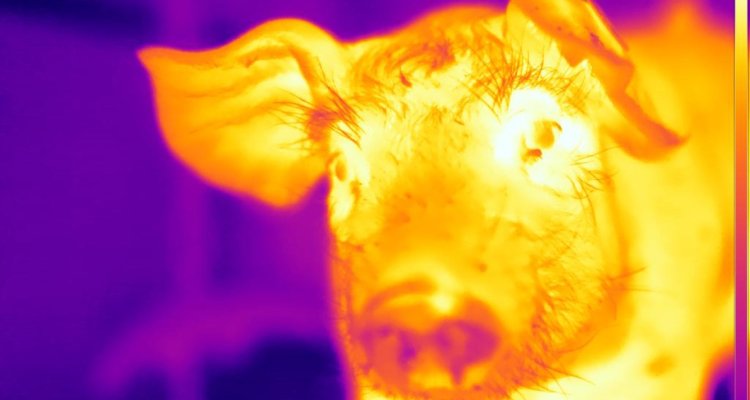
Project
Facial skin temperature and other measurements of emotions in pigs
In science and society, there are concerns about the welfare of farm animals, including pigs. To improve their welfare and enhance the sustainability of livestock production, it is thus essential to measure welfare properly. One part of good welfare is that animals experience more positive than negative emotions. An accurate assessment of the emotions of animals is thus essential.
Emotions in animals can be represented along the dimensions of valence and arousal. The valence dimension is about whether the emotion is regarded as positive or negative by the animal. The arousal dimension is about how activated the animal is or the intensity of the emotion.
To measure emotions in animals, one can use the components associated with emotion: behaviour, physiology, cognition and feelings. For instance, when faced with a predator, an animal may decide the best option (cognitive) is to flee from the predator (behaviour), and at the same time, it has an increased heart rate (physiology) and likely feels frightened (subjective). The latter is a component that cannot be measured in animals as animals cannot verbally report how they are feeling, but the other three can be measured.
Facial skin temperature has recently been suggested to be a promising physiological component for measuring emotional arousal and valence. When aroused by, for instance, the presence of a predator or other stimuli, the sympathetic branch of the autonomic nervous system causes peripheral blood vessels to constrict to direct blood and, thereby, energy and oxygen to the core of the body where it is needed. This leads to an initial drop and subsequently an increase in temperature in the periphery of the body, such as (parts of) the face.
The valence state of emotions may also be indicated by facial skin temperature. The emotional valence lateralisation hypothesis proposes that left brain hemisphere activity is associated with positive emotion and the right hemisphere with negative emotion. Asymmetry in facial skin temperature (difference in temperature dynamics between, for example, left vs right ear) in response to an emotional stimulus may thus reflect lateralised brain activity and hence be a marker of valence.
Facial skin temperature can be measured non-invasively with a thermal imaging camera but doing this manually is time and labour intensive. Furthermore, any change in the requirements means that the measurements should be started over from scratch. Therefore, this project aims to develop a neural network to automatically measure facial skin temperature.
Progress and Outlook
As a starting point for this project, the ear base of pigs was chosen as a region of interest to extract temperature. This is an interesting area for emotion research and relatively easy to detect from the top view. In 2023, this neural network was developed as part of a complete pipeline to extract temperature automatically from the ear base (see Figure 1 and the video). The model checks first whether the ear base is well and completely visible to observe the thermal temperature, and then uses an encoder-decoder structure of a convolution neural network to segment the ear base. The encoder part extracts deep image features, and the decoder part reconstructs dense segmentation masks. The model showed good segmentation performance (mean Pixel Class accuracy: 92.3%, mean Intersection over Union: 87.1%) and the extracted temperature observed by the model matched entirely the manually observed temperature. Are you curious about the model and do you want to know more? Please check out the paper (expected to be published in 2024).